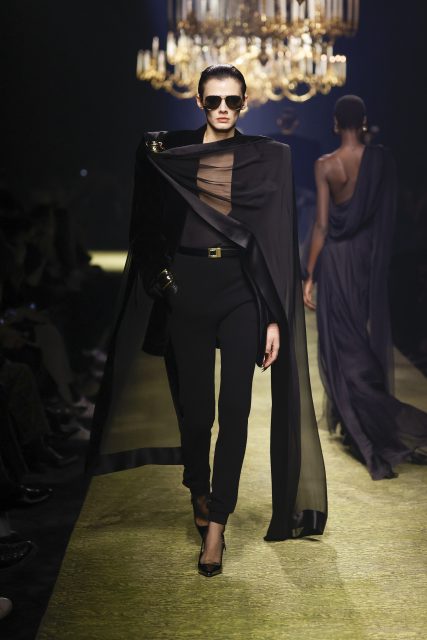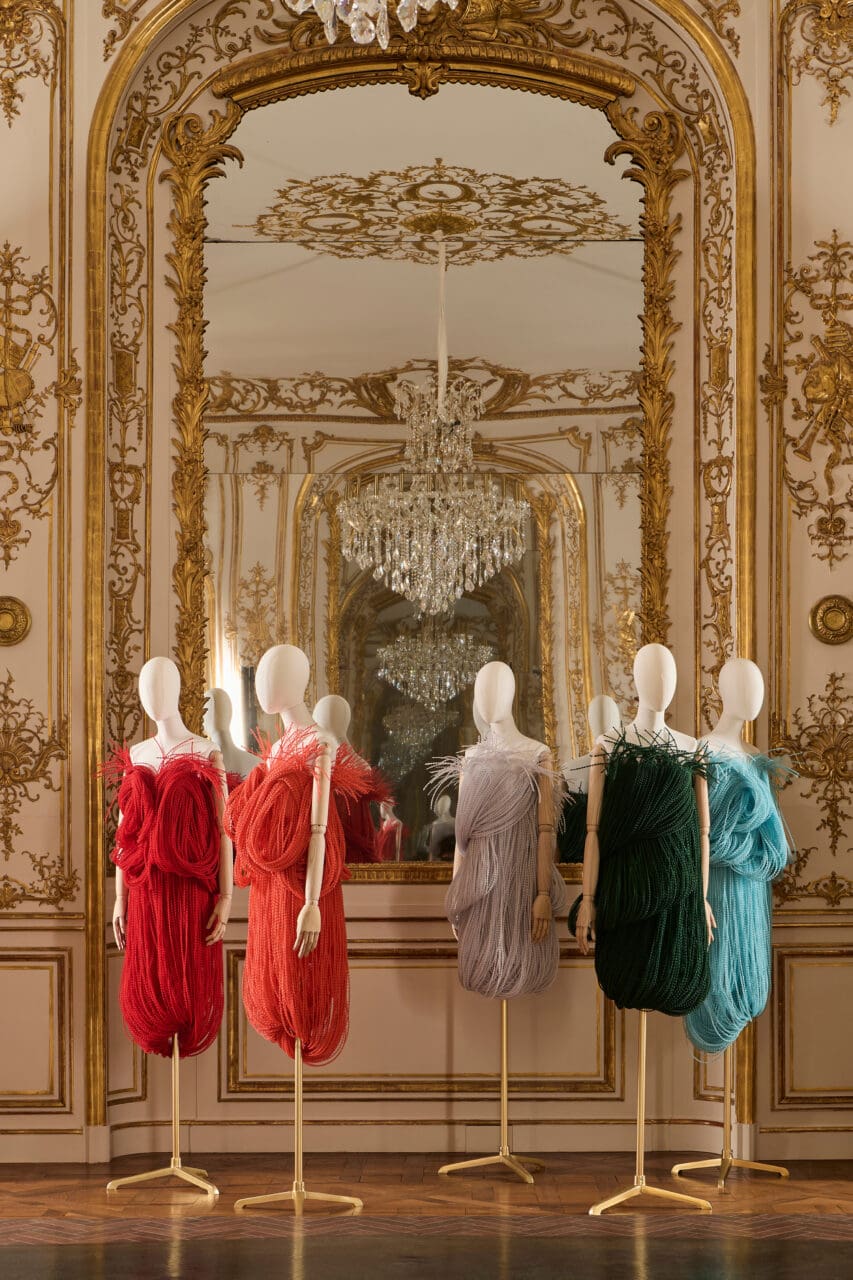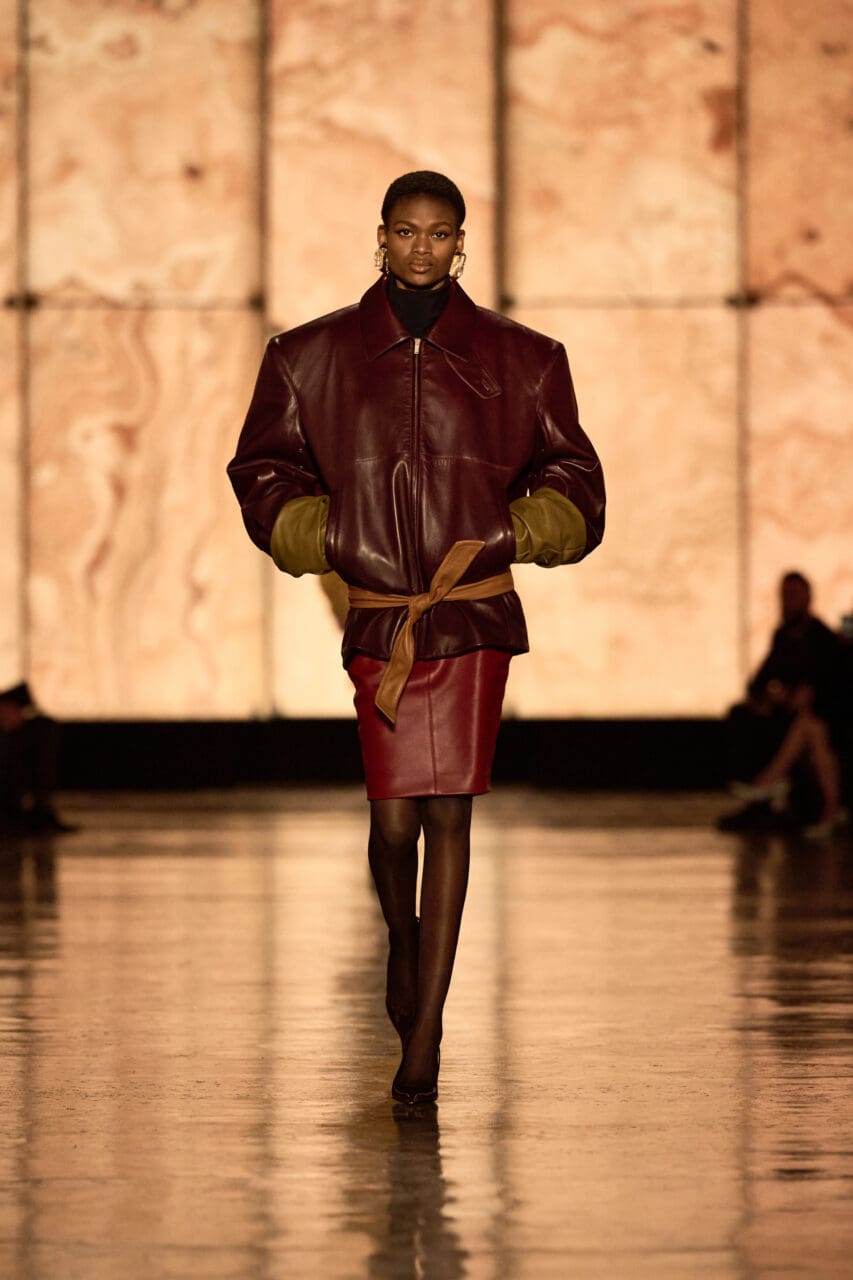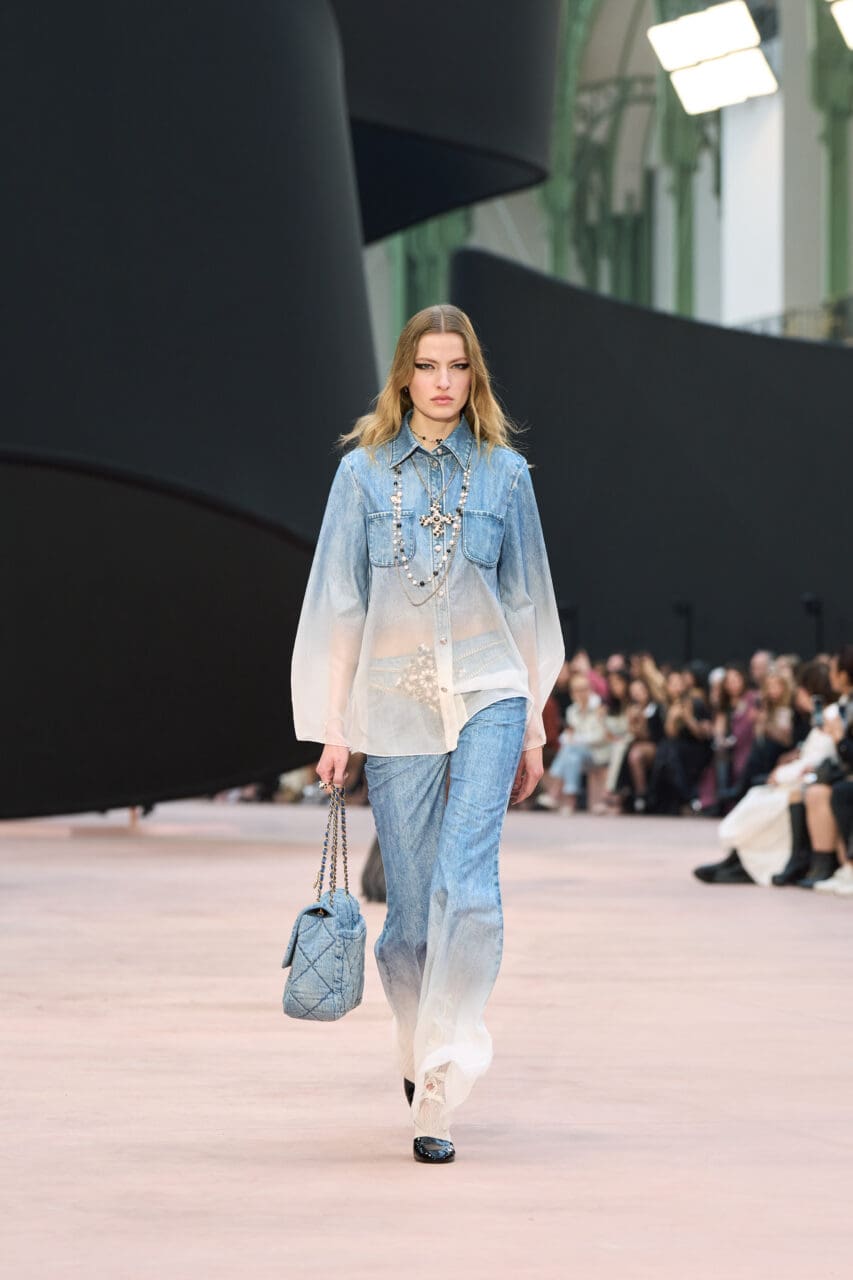A direct, austere and yet powerfully sexy Parisian walked the Dior runway in Maria Grazia Chiuri’s fall ready-to-wear show. Mostly dressed in black, artfully wrinkled suits and dresses, her wardrobe adroitly addressed both the somber present and the 1950s. This was recognizably Christian Dior’s storied heritage, right enough—but “reconstructed” as Chiuri put it, by a creative director who is focused on seeing how the past can be made relevant for today’s women.
What’s distinctive about the routes Chiuri takes into Dior’s history is that she identifies with the rediscovered, little-known stories of the women who wore his clothes. At a time when we might be craving more simplicity and less performative theatricality from fashion—that’s a yes to pencil midis and plain-but-interesting day dresses—her design solutions came from her personal response to thinking about the feisty resilience of three post-war clients. Present in one way or another on the runway were Catherine Dior, the couturier’s sister; Juliette Gréco, the Left Bank singer and actress who was famed for wearing existentialist black; and Edith Piaf who was, well Edith Piaf. The Dior printed T-shirt of the season read “Je ne regrette rien.”
Chiuri sees all three as forerunners of feminism. “Catherine Dior had come back from a concentration camp, and became an entrepreneur who never married, though she had a long-term relationship. We forget that in the ’50s these women were more liberated than we can imagine,” Churi said during a preview. Then she added, “It was also a way to think about myself. Because in my house, my mother and grandmother were independent women who had come through the Second World War.”
Chiuri’s background is another key to her sensibilities. What she brings as an Italian to a storied French house is a lightness that has managed to ease and modernize Dior templates without committing brand sacrilege by throwing them out. The rumpled surfaces of the clothes—almost as if a cache of New Look checked suits, pleated circle skirts and cocktail dresses had been found in a trunk—had a satisfyingly vintage look about them, achieved by ultra-modern fabrics being interwoven with metal thread. “With Dior silhouettes, they are very precise—with this fabric nothing is precise,” Chiuri laughed, demonstrating how the “metal memory” in the garments means that women can tweak them to suit their bodies or moods at will.
Perhaps most importantly, the nipped-in boning of the Dior Bar jacket has become a thing of the past. “I worked to make everything light. This is my DNA, something that is my Italian background. Near the Mediterranean, you can’t wear clothes that are heavy and hot,” said Chiuri. Nearly seven years into her creative directorship at Dior, she’s enjoying the fact that she’s come to understand Frenchness more, as well. “It’s a conversation,” she laughed. “Here is a map of Paris we’ve used as a print. Dior is Paris—and this one’s in Champagne silk!”
Perhaps a sign of Chiuri’s success is that her clothes really don’t need convoluted explanations to make sense. Maybe there was something of Catherine Dior in the simplicity of the opening look—an open-necked white shirt, tucked into a black pencil skirt—and in the blurred chine flowered dresses which came later.
There was also a black leather holster, covered in laser-cut flowers slung surreptitiously across one shoulder of a black shirt; perhaps a salute to all the brave women of the French Resistance, Catherine Dior’s sisters-in-arms. Chiuri is having fun with accessories: the platform-soled ankle-strapped shoes redone with Roger Vivier’s famous “Choc” heels from the 1947 New Look collection; jewelry with miniature Eiffel Towers dangling from rings and the center of pearl chokers.
Christian Dior was famed for bringing back romance, glamour—even fashion itself—a sign of hope and joy for all women after the devastating war in Europe. Chuiri has her own approach to encouraging and uplifting women’s spirits today. Her sober-sexy collection was arched over by the humungous, playfully colorful fabric sculpture installation commissioned from the Portuguese artist Joana Vasconcelos. More than a set, it felt almost like a cosily protective, affirmative female presence watching over the models and audience alike.
Editor
Sarah MowerCredit
Lead image: Photo: Filippo Fior via Gorunway.com





